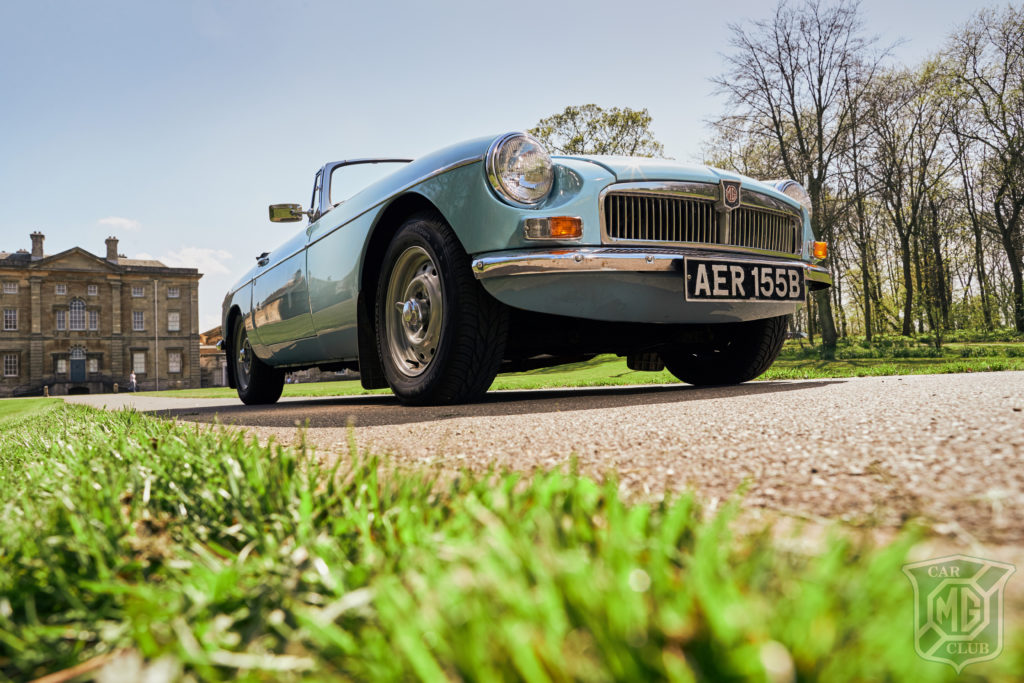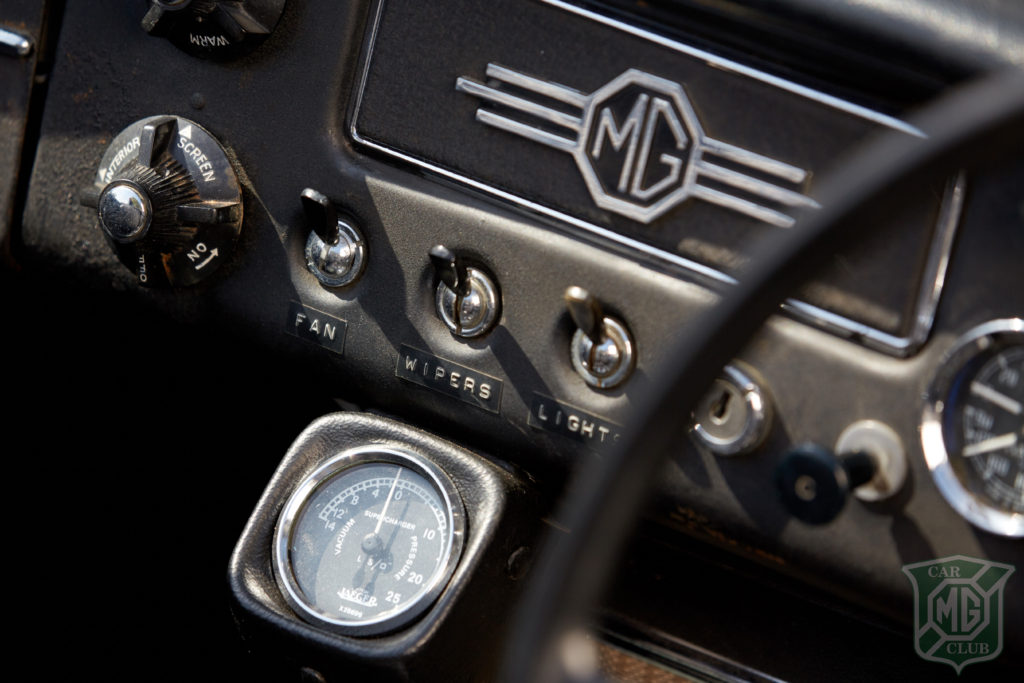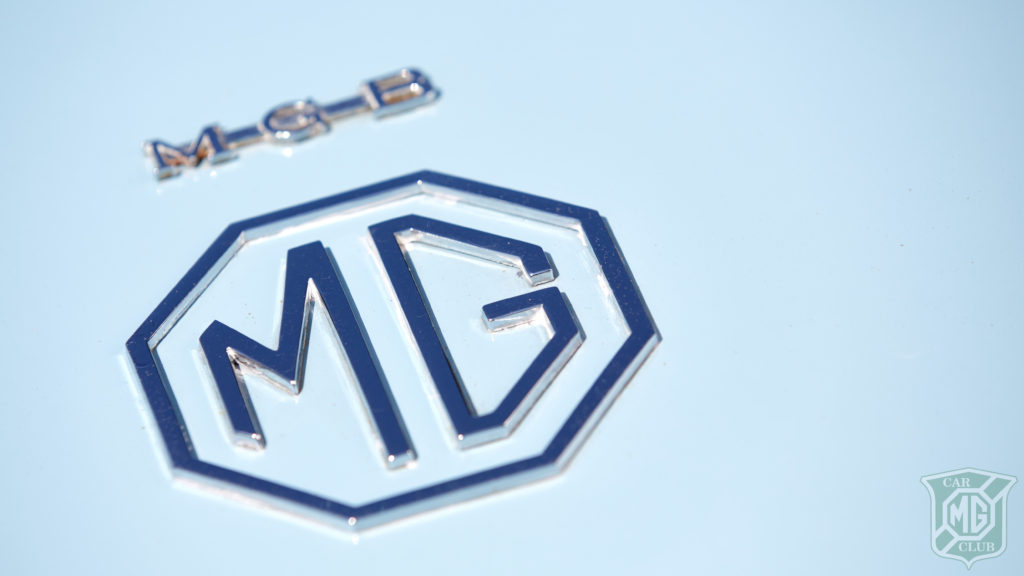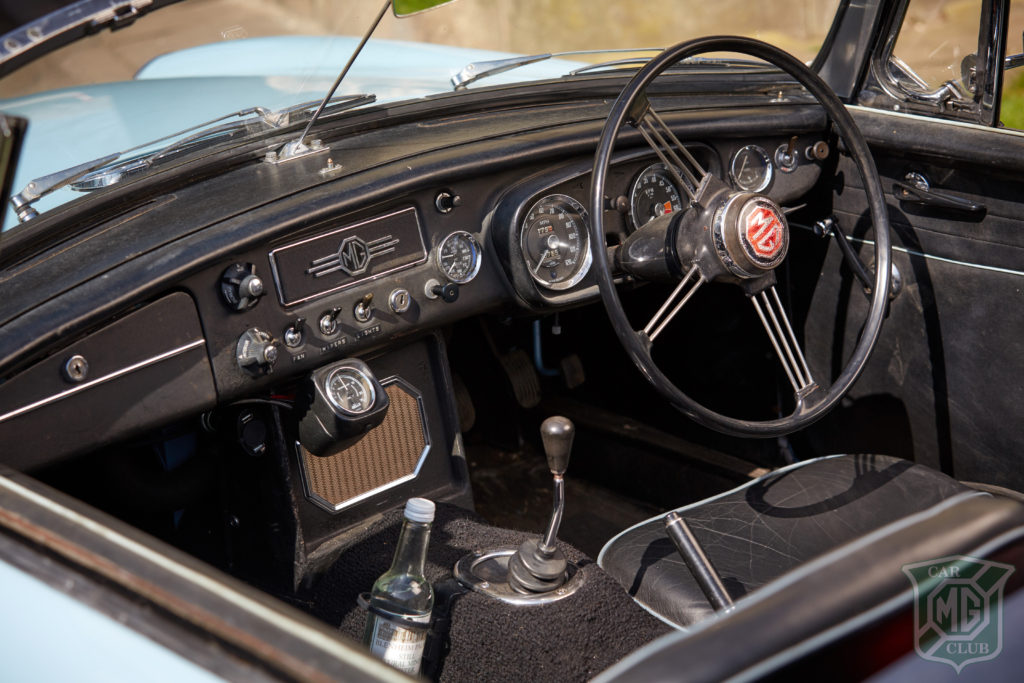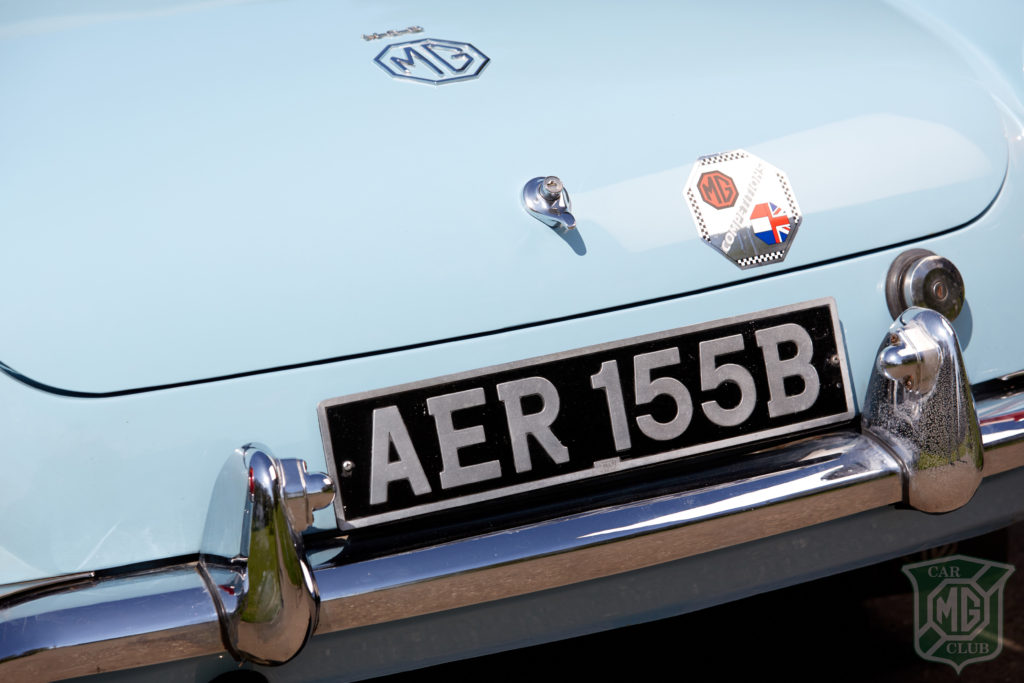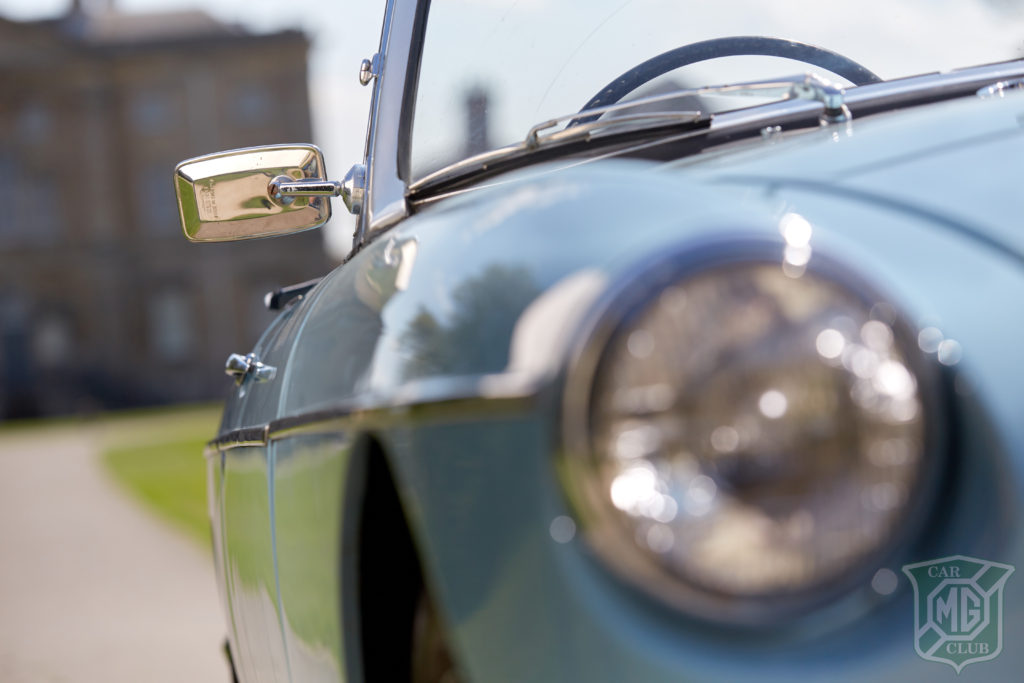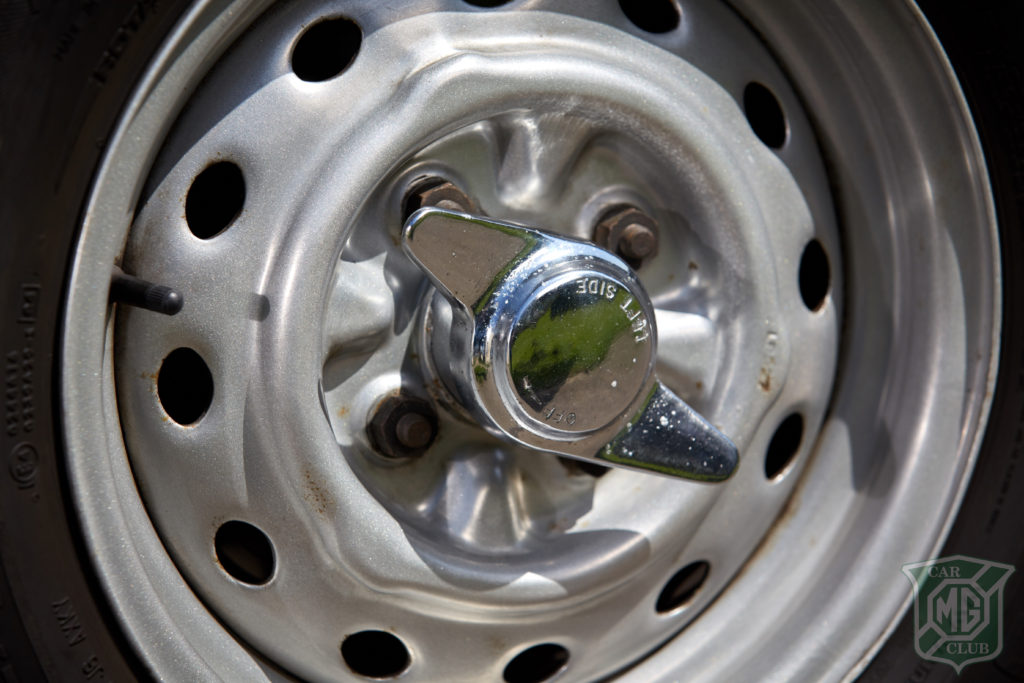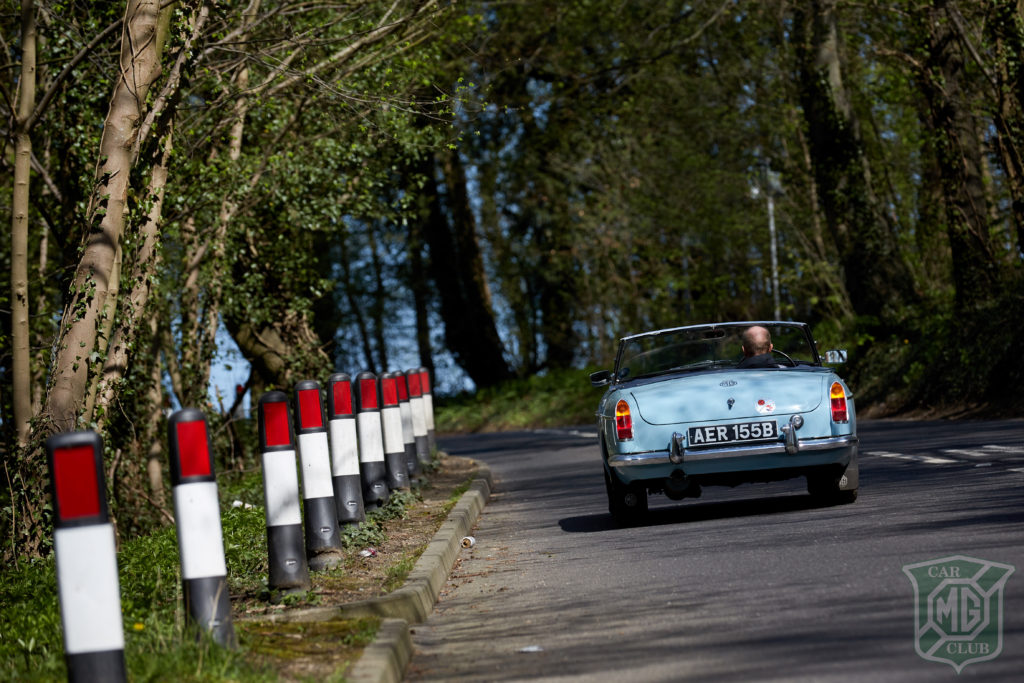Time to B Supercharged
By John Prewer
Photos: Shaun Flannery Photography Ltd, UK
My MG story began in 1981 with the purchase of a 1978 MGB GT, DVV 350T, the second I saw and the first I drove. It wasn’t long before I found the MG Car Club at the Milton Natter, near Cambridge, and later the new Natters near Bury St Edmunds and Watton which bought me valued friendships that have lasted to this day and are rekindled at MGLive! Silverstone every year.
A Cambridge Natter trip to the Luxembourg Weekend in 1982 was my first European outing with my MGB GT. Amongst all the fun and a speedy session on the Goodyear tyre test track, the whole adventure showed me that crazy people rebuild hopelessly rusted and clapped-out old cars into splendid examples of British engineering – so I just had to have one!
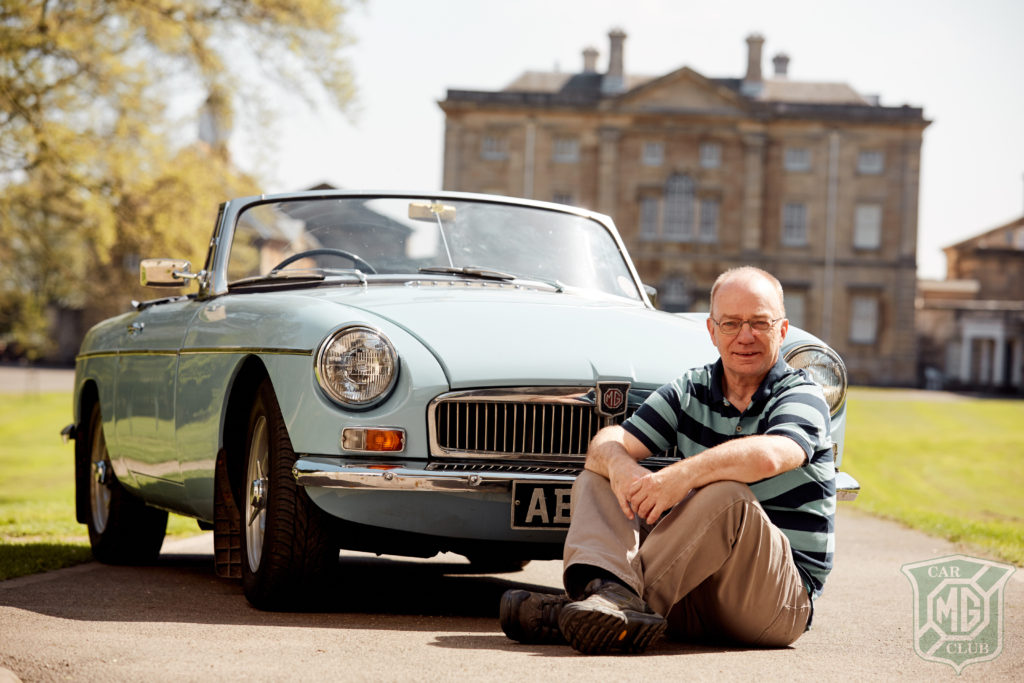
After looking at two incredibly rusty MGAs, one of which was more a garden feature than a car, I found AER 155B in a back alley beside Parker’s Piece in the middle of Cambridge for £200 – a one-owner 1964 MGB in a much paler blue colour than the original Iris Blue, and most importantly it was ripe for a rebuild. Once it had been trailered 40 miles home, my Father and I set about the work, learning as we went.
The exception to this learning was the engine, where his experience as a Flight Engineer on Avro Lancasters during the Second World War meant that my B series was built by a man more at home with Rolls Royce Merlin engines than the four pot B series. He also joined the Car Club with an early MGA 1500 (PLU 340L) that I found him and later inherited, and which he re-registered as NFO 531 – highly appropriate as ”NF” was the aircraft number prefix for 138 Squadron for whom he flew SOE special operations from RAF Tempsford into occupied Europe during World War II.
The rebuild was aided and abetted by having Beer of Houghton and the MGB Hive within easy travelling distance, and despite drooling over the race cars at Beers I was soon steering away from my grand notion of building a works racer lookalike and towards keeping AER 155B just as it was when it was new.
This was helped by uncovering the original Iris Blue under the carpets and seeing another early Iris Blue car (175 DAH) in the paddock at the Car Club’s Brands Hatch race meeting in 1982 when, unlike today, seeing an Iris Blue MGB was a very rare occurrence. I also quite liked the idea of fitting some of the aftermarket modifications available in the mid-sixties that are quite rare now, but more of that later.
Of course, being an MG Car Club member motorsport entered my DNA, and together with Patrick Nicholls I began organising an annual track day at Snetterton. This was long before MGs on Track, and so quite an unusual event in the calendar. When the event became no longer viable a group of participants got together and started the Anglia Phoenix MG Championship that is now the Peter Best Championship, so I can make a tenuous claim to fame of having lit the blue touch paper on some great racing for the Car Club.
I took to the race tracks myself, albeit briefly, starting with an encouraging class win at a hillclimb held as part of the 1985 Dutch Weekend – yes there are hills in Holland! I was more than slightly proud when AER 155B took me to winning the Hanks Trophy at the Car Club’s Silverstone Race Meeting. Back then it was the trophy given to the best newcomer and AER 155B hadn’t raced before! It is a truly magnificent trophy, the best MG TD model I have ever seen, and was a great talking point on my coffee table for the following year.
This all ended literally with a bump at Oulton Park where I lost it at Lodge Corner, but I did have the opportunity of sympathising in the paddock with Malcolm Beer who also dented his very well-known full-house MGB GT V8. It made me feel a lot better to know that the experts also have these mishaps.
As purchased, AER 155B had a couple of unusual accessories. First, a ‘flash to pass’ switch that I couldn’t find out anything about at the time, took off and now much to my annoyance have completely lost (if anyone out there has one I am very definitely in the market for it). Second, it was fitted with a Kenlowe Fan, thermostat and override switch from the 1960s that even after all these years I have never seen the like of on another car.
Though the BL Heritage certificate states that the original tonneau was black, I added a blue one that was probably older than the car. Sandra at the MGB Hive told me that this was found in a chicken shed and she thought my car would be the ideal home for it! Also, when trading parts for my MGA with a man just down the road from Beer of Houghton, I bought some Nokof dummy spinners for disc wheels.
These make MGB steel wheels look vaguely like MGA Twin Cam wheels and are a pukka 1960s aftermarket accessory. I was already on the lookout for them, having seen a Motor magazine road test from 1966 that featured an MGB GT fitted with a set. Smallwood Metal Finishers in Peterborough did an excellent job of restoring them and after a lot of work they replaced my hub caps.
In 1986 Doug Barham, an MGC owner from Bury St Edmunds, offered to sell me a Shorrock Supercharger kit, as marketed in the 1960s specifically for an MGB, for £200 and… well the outcome was obvious. This was a fully functional and near pristine C142B Shorrock Supercharger, complete with a 1 3/4” Stromberg carburettor on a manifold made for an MGB, a manifold to fit a B series cylinder head, and fittings for the front plate of the B series engine itself. And so then the fun started and I set about fitting it to my car.
The big problem was lowering the compression of the 1964 vintage 18GA engine to allow the supercharger to work well, especially difficult as nobody was supercharging MGBs back then. Low compression pistons for a three-main bearing engine were no longer available, and to fit later pistons to the earlier engine I found out that I needed MGA Twin Cam con-rods which were £275 each at the time, nearly 30 years ago!
Back then I had many more urgent places for this sort of money. The project was put on hold until, a few years later, I went for an MOT to Beer of Houghton, got talking to the late Syd Beer, and mentioned to him what I had. A deal was done to swap my supercharger for an overdrive gearbox fitted to my non-overdrive car (a very worthwhile upgrade).
Another unsuccessful venture was fitting the Heron Fastback hardtop that I bought from Patrick Nichols in East Dereham. This hardtop incorporates its own boot lid – you remove the original MGB boot lid and fit the sleek fastback hardtop with its integral smaller boot lid. This, too, is a rarity and I have only seen three others – one fitted at the Danbury Natter in the 80s, one on sale at Beaulieu about the same time, and one in a picture on the web from Germany.
I bought new headlining and seals for it and painted it Iris Blue to match my MGB, but that is as far as the project got because my Arkley Sprite racer and another MGA (9950 MH, a Chariot Red 1600) got in the way. Of course, being me I still have this hardtop and everything to make it as good as new, so maybe one day…
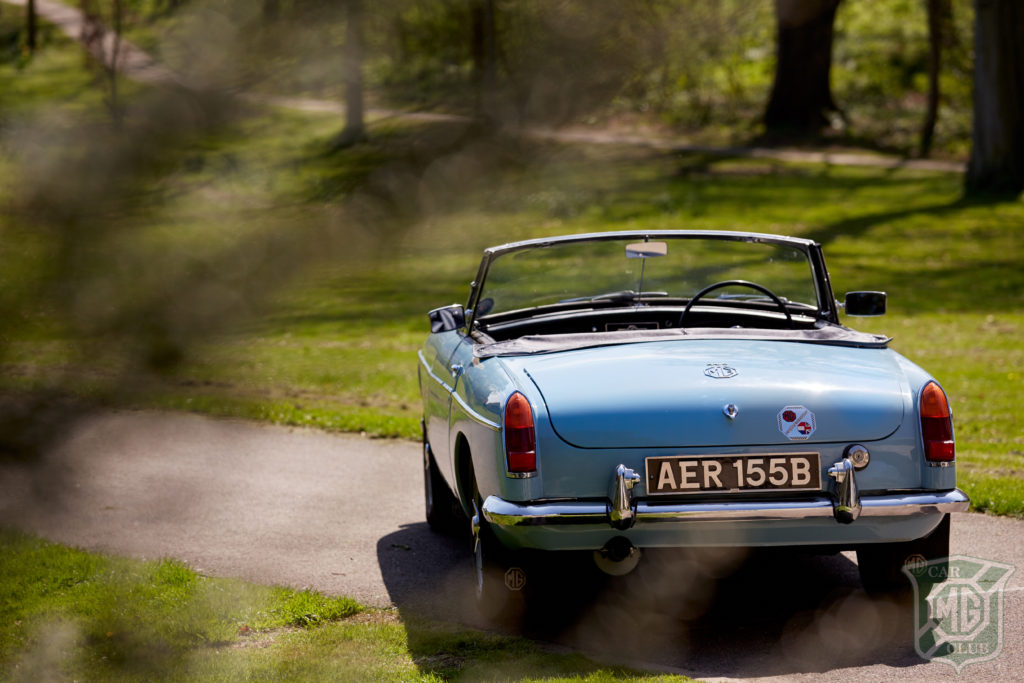
AER 155B is always taking me around in circles. It went round the clock at an MOT when I delivered it for its annual physical to Syd Beer with “00000” miles on the clock which he duly wrote on the certificate with every zero – my ex-wife had wondered why I went around the roundabout up the road three times, until I told her what I was up to.
A bigger circle was 25 years after buying the car in Cambridge, when I found that my daughter’s headmaster in York was the son of the man I bought it from! Martyn Andrews put me in touch with his stepmother, Gwen, who was the main driver in the ‘60s and ‘70s and she provided me with a photo of the car when it was brand new and more details of its history.
It turns out that a Shell European Touring Map which I found under the driver’s seat when I rebuilt the car was left over from her husband’s trip to communist Czechoslovakia in the 1960s, a complete story and adventure in itself, I am sure. Czechoslovakia is a lot further from home than Heidelberg, which is my most distant trip, so beating that distance record is a challenge for the (near) future!
My MGB has taken me camping in the Mosel Valley and the West Coast of Scotland, to work in most parts of the UK, and whilst working away to a couple of dozen MG Car Club Natters around the country. It may be 54 years old, but a trip to my daughter’s school had her best friend drooling; apparently it is a “very cool” car and she wants one!
So what about that Shorrock Supercharger?
Well, I had the car rebuilt again for the MGB’s 50th anniversary, but more importantly for its 50th birthday on February 28 2014, as I wanted it to be in tip-top condition. Rather than do it myself and take years, I gave it to Malcolm Beer who did a splendid job, and when I picked the car up from where he had parked it next to this famous ex-works MGB, GRX 307D, I just had to ask if he still had the supercharger. “It’s on a shelf back there,” he replied. “Look good in my car, wouldn’t it?” said I; and so the deal was struck for the supercharging to go ahead.
First, I retrieved AER 155B’s original engine from under my garage bench. For most of its life with me the car had been fitted with a 1963 18G engine that I built specifically for racing, with the help of Vegantune in Spalding, a terrific engineering firm better known in Lotus circles. Later this engine gained a great unleaded head that Malcom Beer built for me with nice, big valves, so the plan was for him to rebuild the 18GA short engine with this cylinder head and a camshaft suitable for the vane-type Shorrock Supercharger.
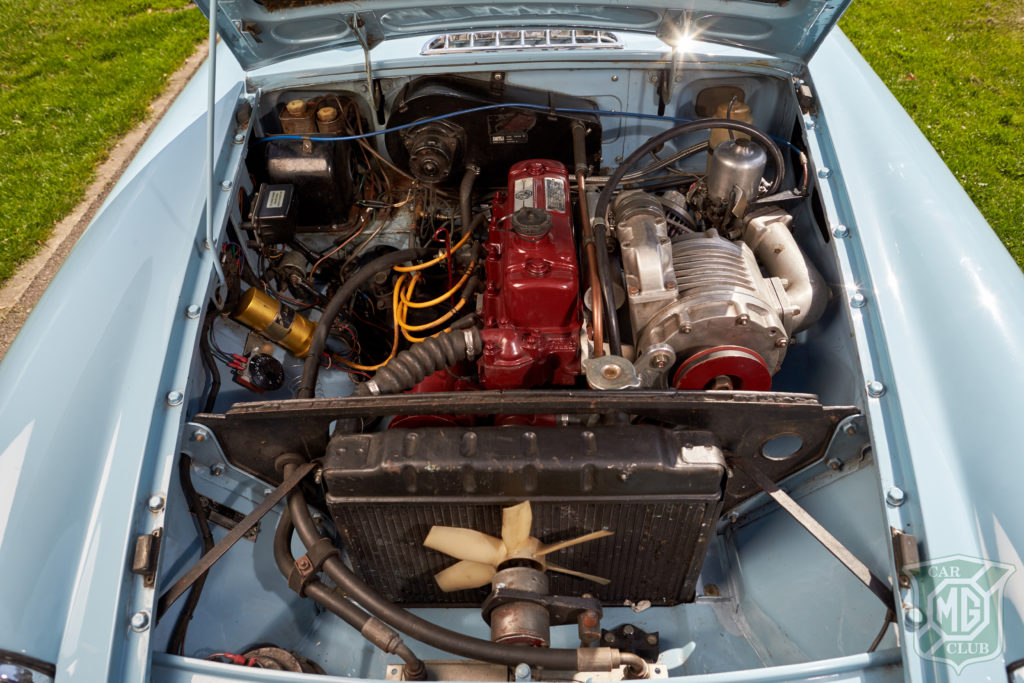
All went well. The engine was done, and then came Malcolm’s bombshell of “You have to run it in for a thousand miles or so before we can supercharge it”. Dammit! All ready to go and now I had to wait, but after 30-odd years I still had patience, and when let loose following a steady 500 miles the new engine proved to be an absolute cracker – I’ve never driven a four-cylinder MGB with so much low-down grunt just where it counts for 90% of my driving.
One problem is that the excellent camshaft doesn’t come with a rev counter drive for the early MGB manual rev counter, so I tried fixing up an electronic Smiths one with the face from a Manual Jaeger original. Enthusiasm got the better of me and it reads hopelessly wrong, so I have learned my lesson and the next job is to actually get a Smiths one working properly before I try that trick again!
After a year more of delay, which was evenly 50% from Malcolm having other cars to attend to and 50% from me the supercharging went ahead, along with fixing the petrol tank and a few other small but vital jobs. Malcolm invited me over to see the engine on the bench first of all. He has the Shorrock inlet manifold from Jean Denton’s supercharged racing MGB and thought of using that, but it would work only with a hump in the bonnet which he didn’t want to do. He also showed me another of his possessions – the enormous Shorrock Supercharger that was the MG Car Company’s spare for the MG EX181 record-breaking car that is now in the British Motor Museum in Gaydon.
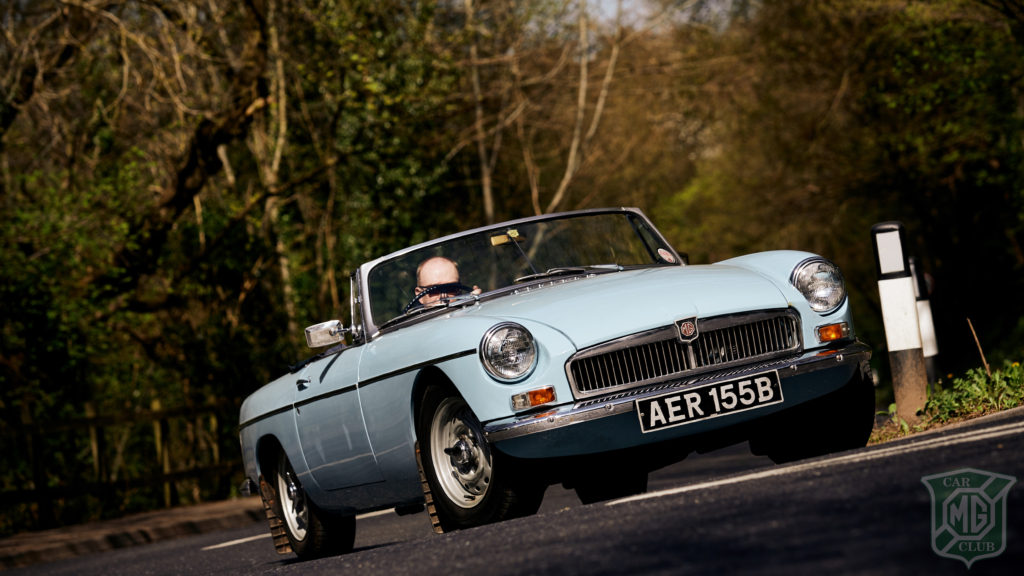
I returned again to see the engine in the car, and to say that the workmanship is top notch is an absolute understatement! It’s made me realise that doing the job myself would have been a completely futile exercise. Though there are parts in the Shorrock MGB kit that help, it is a really tight fit. There is a rose joined stay for adjusting the belt and modifications and tweaks to get it sitting just right, but I would have to attend to the under-bonnet soundproofing as it didn’t’ fit with the supercharger underneath it. Also, the engine is moved back in the car to allow for the supercharger drive belts.
Years earlier I had spotted a Jaeger supercharger boost gauge in Malcolm’s display cabinet that exactly matches the early MGB Jaeger instruments. To be honest, I don’t think Malcolm even remembered that he had this rarity, but it gained a new home in my car. The alternative would have been to find a Shorrock one, which are not quite as rare as hens’ teeth but usually come up in white with black numbering that I think would have looked out of place in an MGB.
The final tuning got a bit technical and involved getting the pulleys the right size and a lot of referring to Shorrock manuals that aren’t exactly easy to come by now. Malcolm also managed to get a look at an original and apparently unused Shorrock C142B for some pointers, and it transpired that mine is an early one, as the later version had some very useful timing marks in the casing.
Upon collection I found that the brakes have also been upgraded. All in all, Malcolm Beer has given the car a very thorough going-over in many ways that I didn’t ask for, but which it certainly needed. The niggles I mentioned have been ironed out whilst retaining the originality of the car, which Malcolm rates so highly he has said he would like first refusal if I ever have to sell it.
My first drive was spent sorting out the timing and jetting of the carb to get it running properly; this after all is a one-off and possibly unique induction set-up nowadays. Straight away I noticed not only that it flies, but that it takes off with no hesitation in second gear – plenty of torque there, then. It is a hoot to drive around at ordinary single-carriageway road speeds, which is exactly what I wanted. As a vane type supercharger, the Shorrock is rated for 3,500 revs constant running (more than the speed limit!) and 5,500 maximum, and so is not a high-rev screamer.
I took the MGB to the gloriously named Bogg Brothers, near Malton, for a rolling road session to get it running just right. A shed in the middle of nowhere had some amazing machinery being attended to, and Dave Bogg with his rolling road got the car running spot on. It is exactly what I wanted in a road-going MGB with the power usable for ordinary driving, since AER 155B isn’t going to take to the race tracks and hillclimbs again (been there, done that!).
What I now have is close to an MGC in terms of power, but when not used in anger it has the economy of an MGB and has relegated my MG TF 135 to third in my small MG fleet’s performance tables. Fuel consumption did worry me on first fill up, but there had been so much static running and playing around with the single 2” SU carburettor that it was nowhere close to what I achieved on the second tankful. Perhaps I should mention that under the bonnet looks marvellous, and the car itself is looking good too – no bump in the bonnet and I took the opportunity to remove the FIA roll bar from the car’s racing days, so there is now nothing external to show the performance.
Premium fuel plus an occasional drop of additive is needed because of the boost. The Shorrock Supercharger also needs an occasional squirt of grease in the front bearing and, as the back bearing is lubricated from the engine, the oil level needs a bit more monitoring than before. What I have is an early MGB supercharged the way an early MGB would have been just after it was built, and that to me is the point of the whole exercise. Apart from Costello conversions and a few other rarities, there aren’t many examples showing how our cars would have been upgraded when brand new.
All’s well that ends well after 35 years… except I still have one left-over project from the 1980s – my Heron GTB fastback hardtop which shows how a hardtop MGB would have looked before the MGB GT was made. If all goes well, my next project will be another MGB to permanently fit it on; this time I hope to have an HRG cross flow head with a couple of Webers powering it – I’m already collecting the rocking horse wotsit rare parts, such as the proper HRG rocker cover which I found on eBay in the USA. By then my MG tally should still be four, provided my daughter comes good on her promise and robs me of my TF 135!

 MG Car Club
MG Car Club